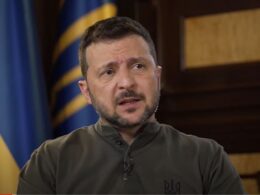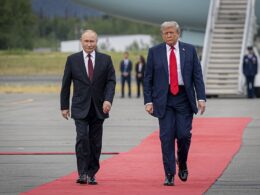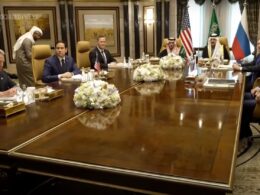White House officials have acknowledged that President Donald Trump will not achieve his goal of securing a ceasefire in Ukraine by Easter, 20 April, The Telegraph reported on 2 April.
"There is a deep frustration with the Russian government over negotiations," said James Hewitt, a US national security council spokesman on 31 March.
Senior Trump administration officials told Reuters that a peace agreement will not be reached in the coming months, raising the possibility that the three-year war could continue.
During Trump's presidential run, he repeatedly pledged to end the war within 24 hours and styled himself as a "peacemaker and unifier." The period of the war resolution extended later to 100 days.
The idea of achieving a ceasefire in Ukraine by 20 April, was primarily proposed by the administration of US President Donald Trump. Trump explicitly stated this goal to European partners and during negotiations involving Ukraine and Russia. The date coincides with Easter, which Trump aimed to use as a symbolic milestone for peace efforts
Trump said earlier this week that he was pissed off with Putin's stance on the ceasefire proposal and claimed he would impose sanctionson Russia.
According to The Telegraph, White House and State Department officials held meetings over the weekend to discuss potential economic and diplomatic punishments they could impose on Russia.
Hewitt added that Trump was "clear" about imposing secondary sanctions on oil if Russia was "not serious about bringing this conflict to a peaceful resolution."
The administration's frustration marks a significant shift from Trump's previous statements expressing trust in Putin's commitment to peace.
Meanwhile, Putin has ordered Russia's largest conscription drive in 14 years, calling for 160,000 men to be drafted into the Russian army by mid-July.
On 11 March, US representatives secured Ukraine’s agreement to a 30-day ceasefire. Putin did not reject the idea outright but set several conditions. In particular, Ukraine’s withdrawal from Donetsk, Luhansk, Kherson, and Zaporizhzhia oblasts, formally renouncing NATO membership plans, adopting a neutral and non-nuclear status, and lifting sanctions against Russia. The sides agreed later to take a pause on the energy infrastructure pause.
Both Ukraine and Russia have accused each other of violating a US-brokered agreement not to target energy infrastructure, while Russia continues its aerial bombardment of Ukraine.
Read also:
- Britain obliges all those working for Russia to register their activities
- Trump’s top general pick supports Ukraine
- Forbes: Ukraine resurrects Soviet ballistic missiles that physics left for dead





